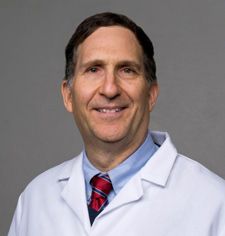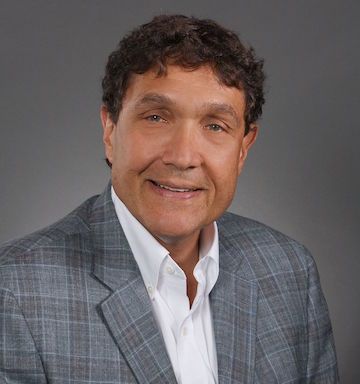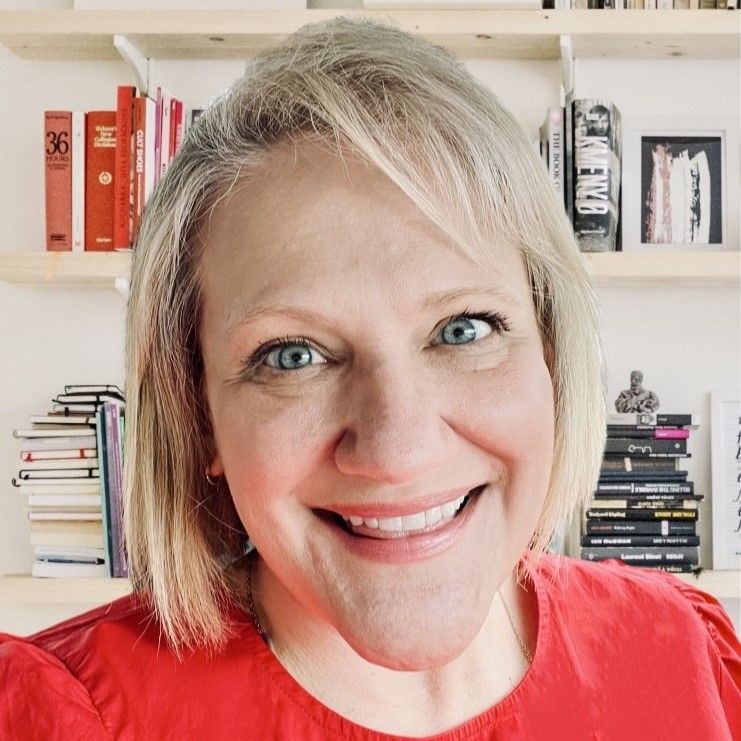Commentary
Article
Challenges of Real-World Adoption of Effective Therapies, Practices to Treat Newly Diagnosed MM
Author(s):
There are now highly effective therapies to treat newly diagnosed multiple myeloma (MM), but it will still take time for them to be adopted in practice, said Chakra Chaulagain MD, FACP, hematologist/oncologist, Maroone Cancer Center of Cleveland Clinic Florida.
Chakra Chaulagain MD, FACP
Image credit: Maroone Cancer Center of Cleveland Clinic Florida

Clinical trials have shown the efficacy of new regimens to treat There are now highly effective therapies to treat newly diagnosed multiple myeloma, but it will still take time for them to be adopted in practice, said Chakra Chaulagain MD, FACP, hematologist/oncologist, Maroone Cancer Center of Cleveland Clinic Florida.
In an interview with The American Journal of Managed Care® (AJMC®), Chaulagain also discussed remaining questions around ideal agents and combinations, the use of minimal residual disease (MRD) to direct treatment, and more.
In the first part of his interview, Chaulagain discussed the data on quadruplet therapies for transplant-eligible patients, challenges with translating the clinical trial findings to real-world practice, and representation in clinical trials.
AJMC: What questions remain around the ideal agents and combinations to maximize treatment responses in newly diagnosed multiple myeloma?
Chaulagain: Based on the recent data around CD38 monoclonal antibody, I think it is pretty much clear that every myeloma therapy must have CD38 monoclonal antibody as a backbone, and we have to build up a regimen around those 2 monoclonal antibodies we have: daratumumab or isatuximab. We have to build a regimen around them for treatment of newly diagnosed multiple myeloma regardless of the patient’s transplant eligibility. For example, patients who are not fit for transplant but are newly diagnosed should receive daratumumab-based triplet. Based on the phase 3 MAIA study1 published in New England Journal of Medicine, the daratumumab, lenalidomide, and dexamethasone triplet was much more superior to the doublet of lenalidomide and dexamethasone in terms of response rate, progression-free survival (PFS), and overall survival (OS). Therefore, any patient with newly diagnosed multiple myeloma who is not transplant eligible should receive a triplet based on daratumumab. A patient with newly diagnosed myeloma who is transplant eligible should receive quadruplet therapy based on a CD38 monoclonal antibody. At the present time, the daratumumab-based quadruplet of dara-VRd is the choice of therapy.
I think we are seeing unprecedented results, but these highly effective therapies are not being widely adopted currently, and it will take time. But once we have these monoclonal antibody–based induction therapy in the form of quadruplet for transplant eligible and triplet for non-transplant eligible widely adopted in practice I think the myeloma survival will be drastically improved.
I think the outcome of these new practice-changing discoveries is yet to come. We'll not see the whole benefit until 5 to 10 years from now, because of slow process adoption in real-world clinical practice by the vast majority of community oncology practices in the US.
AJMC: You've already alluded to MRD being involved in the PERSEUS2 and IsKia3 trials; what role does this type of testing play in evaluating efficacy in clinical trials?
Chaulagain: As of now, MRD testing is prognostic and should not be used for therapeutic decision making, unless it is in the clinical trial. Outside of the clinical trial, we do not use MRD testing or MRD negativity or positivity to decide what treatment to offer to the patient or whether to discontinue or de-escalate treatment if the patient is MRD negative. MRD-adapted therapy is probably the future in multiple myeloma. We already have enough data showing that MRD negativity is associated with improved PFS and OS in patients with newly diagnosed multiple myeloma, and MRD-adapted maintenance is already being tested in the PERSEUS clinical trial. If the patient has been persistently MRD negative at a 1-year interval—so-called sustained MRD negativity—they could discontinue daratumumab and continue on lenalidomide alone as a monotherapy. So, the MRD-adapted maintenance strategy is being tested and the preliminary results are very encouraging. At the same time, if an MRD-negative patient became MRD positive again—MRD resurgence—then daratumumab can probably be reintroduced with continued MRD monitoring.
But again, outside of the clinical trial, for now, MRD testing has not been widely adopted in clinical practice. There are also some complexities and difficulties in terms of testing. For example, insurance coverage and the out-of-pocket cost for patients are of concern. Also, these tests are technically demanding, the bone marrow specimen need to be shipped out from the location where the bone marrow biopsy is done. There is a next-generation sequencing and a flow cytometry–based MRD testing. But both of these assays are technically demanding and are not routinely offered even in major academic medical centers.
AJMC: What impact using MRD testing to guide treatment decisions have on managing the financial burden of multiple myeloma for patients?
Chaulagain: Patients can potentially enjoy a treatment-free remission or can stay on a minimal single-agent maintenance therapy if they were to have sustained MRD negativity. The key is sustained MRD negativity, because one-time MRD negativity is not enough.
I see a tremendous potential for cost saving, and saving the patients from toxicity, both financial as well as medication-related, if the sustained MRD negativity approach is utilized for offering patients a treatment-free remission or minimal single agent maintenance therapy using MRD-adapted therapeutic strategy. Again, these approaches are being tested in a clinical trial, and I would caution against practicing it routinely in clinic.
AJMC: What tools or resources would help accelerate adoption of new therapeutic advances for transplant eligible patients into practice?
Chaulagain: I think it's improving the knowledge by both the scientific community and guidelines-making institutions, such as National Comprehensive Cancer Network (NCCN), the American Society of Clinical Oncology, or the American Society of Hematology. Spreading knowledge and making sure payers are changing their policies from triplet to quadruplet as a new standard of therapy. What I have found is that a lot of the denials I get when I order a new therapy is because the payer changes its policy every 6 months, and if they had just changed their policy but there is a new approval that's practice changing, it takes several additional months for them to change their policy to accommodate the new practice-changing therapy.
It'll take time, but it'll happen because it is beneficial to the patient. This change will be driven by physicians and by patients, and adoption should also be driven and encouraged by organizations like NCCN, by ensuring preferred regimens in their practice guidelines are amended immediately reflecting of practice changing clinical trials.
AJMC: Could you provide perspective into how you anticipate front-line treatment continuing to evolve over the next 3 to 5 years with further validation of MRD end points and combination approaches?
Chaulagain: I think the front-line therapy will be more and more quadruplet therapy, and it'll be based on a CD38 monoclonal antibody plus a triplet of a proteasome inhibitor, an immunomodulatory drug, and dexamethasone. Other agents coming to the front is probably not happening immediately. I do not see newer therapies, such as bi-specific T-cell engagers (BiTEs) or chimeric antigen receptor (CAR) T-cell therapy coming up front, because of their technically demanding nature, waiting time during manufacturing associated with CAR T. And both CAR T and BiTE therapy share some unique side effects in the form of cytokine release syndrome and neurotoxicity, which cannot be managed by regular community oncology practices and must be done in the limited number of academic sites we have.
These therapies are, in general, not made for general community oncology practice. And as you know, the general community oncology is the vast majority of the market in myeloma oncology therapeutics in the US. CAR T-cell therapy and BiTE therapy are currently limited to academic centers that have a stem cell transplant or cellular therapy program. I do not see any possibility of that expanding right away into general oncology practice.
The best treatment for myeloma is a therapy that can be widely used by every general hematology-oncology doctor and is highly effective with limited side effects. That therapy will be quadruplet therapy, which we already have: dara-VRd. I do not see that these modern BiTE or CAR T-cell therapies will replace this quadruplet therapy anytime soon for upfront treatment of patients with newly diagnosed stem cell transplant–eligible myeloma.
AJMC: What do you say is the most promising areas of unmet need in newly diagnosed multiple myeloma where new therapies could have the greatest impact?
Chaulagain: I think high-risk multiple myeloma, particularly those with 2 or more high-risk myeloma fluorescence in situ hybridization findings are harder to manage. They all respond to therapy very well, but unfortunately, they relapse, and the remission is usually short-lived. So, newer therapies are needed there. We have some preliminary signal from the IsKia trial that maybe the quadruple of isa-KRd has some benefit in this area. But I would like to see that efficacy sustained for a long period of time before we make any conclusive remarks about that.
Another area of unmet need is extramedullary multiple myeloma. These patients tend to do inferiorly compared with medullary myeloma. Those patients who present with advanced renal failure at the time of diagnosis end up on dialysis, and that's a very difficult area for multiple myeloma. And in the relapse setting, triple-class-refractory—quad-refractory and penta-refractory—patients have dismal survival. This is probably the population that benefits from bispecific T-cell engager therapy, and BCMA-based or GPRC5D-based CAR T-cell therapy. We have 2 BCMA-based BiTE therapy— teclistamab and elranatamab—and we have a GPRC5D-based BiTE therapy—talquetamab. A good percentage of triple-, quad-, and penta-refractory myeloma patients can be salvaged by using BiTE therapy or CAR T-cell therapy, and the remainder of patients with refractory myeloma should be enrolled in clinical trials testing newer strategies.
References
1. Facon T, Kumar SK, Plesner T, et al; MAIA Trial Investigators. Daratumumab plus lenalidomide and dexamethasone for untreated myeloma. N Engl J Med. 2019;380(22):2104-2115. doi:10.1056/NEJMoa1817249
2. Sonneveld P, Dimopoulos MA, Boccadoro M, et al; PERSEUS Trial Investigators. Daratumumab, bortezomib, lenalidomide, and dexamethasone for multiple myeloma. N Engl J Med. 2024;390(4):301-313. doi:10.1056/NEJMoa2312054
3. Gay F, Roeloffzen W, Dimopoulos MA, et al. Results of the phase III randomized Iskia trial: isatuximab-carfilzomib-lenalidomide-dexamethasone vs carfilzomib-lenalidomide-dexamethasone as pre-transplant induction and post-transplant consolidation in newly diagnosed multiple myeloma patients. Blood. 2023;142:(Supp 1):4. doi:10.1182/blood-2023-177546


